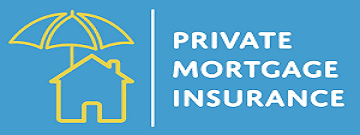
PMI, or Private Mortgage Insurance, is the lender’s protection in the event that a homebuyer defaults on their primary mortgage and the home goes into foreclosure. Generally, a lender will require Private Mortgage Insurance on mortgages where the down payment made by the buyer is less than 20% of the purchase price of the home. This can also be interpreted as having a Loan to Value (LTV) ratio in excess of 80% suggesting the mortgage has a higher risk profile or greater leverage. Typical PMI rates may be between 0.50% – 1.00% but may occasionally fall outside this range depending on the risk profile.
NOTE: To see how this charge can affect the level of a mortgage repayment, see our handy mortgage loan calculator tool on our Personal Finance Calculator page.
Buyers may be required to pay PMI although the insurance does not protect the homebuyer, it protects the lender. Therefore, many personal finance advisors recommend avoiding PMI if possible. If Private Mortgage Insurance is unavoidable, many personal financial advisors suggest eliminating it as soon as possible is the next best thing. The term “Private” is used to distinguish the service which is also available by Government sanctioned agencies.
There are a number of alternative forms of mortgage insurance. Generally, if it has not been specified, PMI usually refers to BPMI
- Borrower-Paid Mortgage Insurance
- Single-Premium Mortgage Insurance
- Lender-Paid Mortgage Insurance
- Split-Premium Mortgage Insurance
- Federal Home Loan Mortgage Protection – MIP
PMI Rates
Typical Private Mortgage Insurance rates may be between 0.50% – 1.00% but may occasionally fall outside this range depending on the risk profile. Listed below are some of the factors that insurance service providers will take into account when assessing the risk profile of the borrower
- the premium plan chosen
- fixed or adjustable interest rate
- your loan term (usually 15 or 30 years)
- your down payment, or loan-to-value ratio (LTV). A 5% down payment gives you a 95% LTV (1 – 0.05 = 0.95), 10% down makes your LTV 90% (1 – 0.10 = 0.90)
- the amount of mortgage insurance coverage (ranging from 6% to 35%) required by the lender
- whether or not the premium is refundable
- credit score
- additional risk factors
- jumbo mortgage
- investment property
- cash-out
- refinance
- second home
Careful advanced analysis of these factors can help potential homebuyers plan ahead and help reduce the potential cost of PMI.
Additional Information
When borrowers apply for a home loan, lenders typically require a down payment equal to 20% of a property’s purchase price. The greater the down payment, the less leverage is used, this means lower risk for the lender. If a borrower is unable to afford that amount, a lender will typically look at the loan as a riskier investment and require that the borrower take out PMI. A big disadvantage of PMI is that once you have it, it may be difficult to cancel.
In addition, taking steps to avoid PMI, such as obtaining financing from additional sources to accumulate a sufficient down payment may lead the borrower into alternative troubles. Borrowing from a trusted source in this instance, such as the bank of mom and dad is a popular choice for first time homebuyers. Despite the cost, the insurance does allows buyers to become homeowners sooner and get them started on the property ladder. Buyers need to carefully weigh up the costs of the insurance over the applicable period and decide whether an upfront cost is acceptable versus delaying a property purchase.
For more detailed and up-to-date information see the article What is private mortgage insurance? on the Consumer Financial Protection Bureau website.
